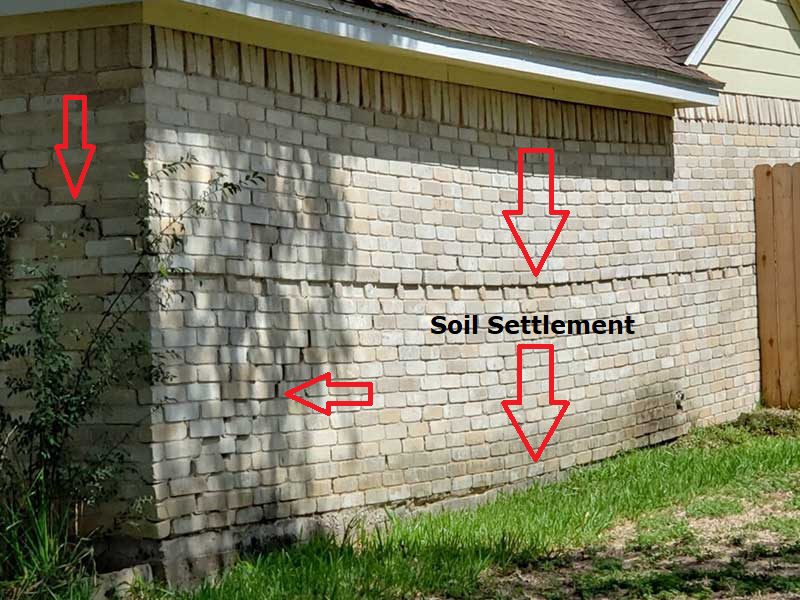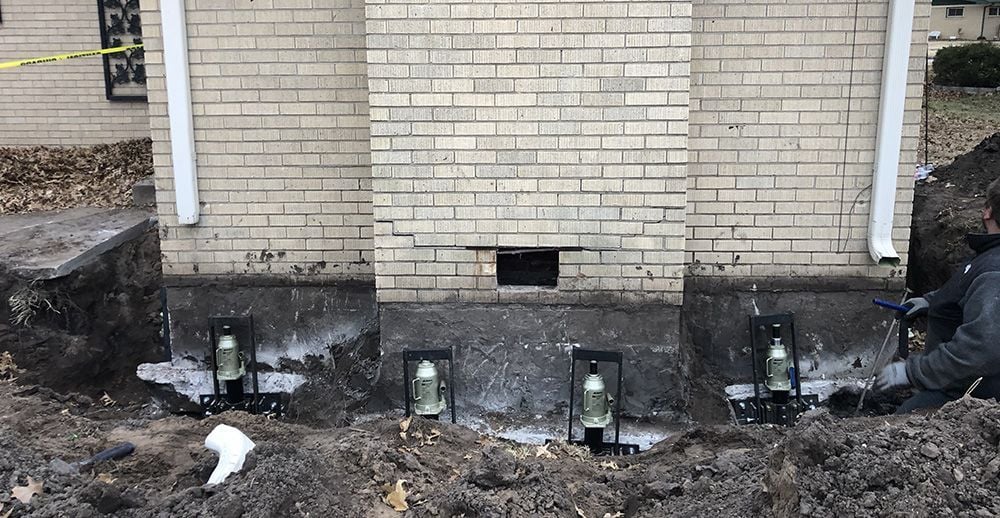Top-Rated Foundation Repair OKC: Specialist Solutions for each Homeowner
Checking Out Various Methods of Structure Repair Work for Various Soil Kinds
Structure fixing is a crucial element of maintaining architectural stability, especially when thinking about the varied difficulties postured by various soil types. The complexity of dirt actions under varying conditions demands a customized technique to repair, guaranteeing ideal remedies such as helical piers for unsteady dirts or chemical cements for cohesive layers. The concern continues to be: just how do we determine the most reliable method for each special circumstance? Comprehending the interplay between soil features and repair service strategies is important, yet there is more to uncover in the mission for lasting remedies. What variables really determine the option of technique?
Comprehending Dirt Types
Soil types play a critical duty in the stability and longevity of building foundations, making it crucial for property owners and building specialists to comprehend their characteristics and actions. The interaction between dirt and structure can figure out the architectural honesty of a structure. There are several soil types, each with distinctive physical residential or commercial properties that affect just how foundations are made and kept.
Granular dirts, such as sand and crushed rock, offer great drainage and are usually considered stable. In comparison, natural dirts like silts and clays display different actions.
Rocky dirts, recognized for their strength and stability, offer outstanding support for foundations but might require customized devices for excavation. On the other hand, loamy dirts, which are a balanced mix of sand, clay, and silt, commonly provide desirable conditions for foundation support due to their moderate drain buildings.

Comprehending these dirt types is vital for choosing ideal foundation repair work approaches, making sure the sturdiness and safety of structures with time.
Obstacles With Extensive Clay
Among the various dirt types, large clay provides special challenges for foundation security as a result of its tendency to go through significant volume modifications with wetness variation. This kind of dirt swells when damp and contracts when completely dry, which can put in considerable pressure on structures. These fluctuations can cause structure breaking, heaving, and settlement concerns, presenting significant threats to the architectural honesty of buildings.
The obstacles with large clay are worsened by its plasticity index, which determines the soil's capacity to alter form and quantity. A high plasticity index indicates higher potential for motion, raising the probability of damage to structures. This is particularly troublesome in areas experiencing extreme or regular climate modifications, where cycles of wet and completely dry problems prevail.
Additionally, the depth of large clay layers can differ, complicating the analysis and preparation of suitable foundation repair techniques. These complexities require a complete geotechnical evaluation to make certain effective foundation repair work techniques are executed, highlighting the relevance of attending to large clay difficulties with knowledge and treatment.
Solutions for Sandy Soils
Sandy soils, defined by their large bit dimension and reduced cohesion, present unique difficulties for foundation stability because of their tendency for moving and disintegration. These homes require specialized structure fixing methods to make certain architectural stability. One effective service is making use of deep structure systems such as helical piers or driven piles. By securing the structure to much deeper, much more stable soil layers, these systems can provide the needed assistance to combat the moving nature of sandy soils.
An additional recommended method is the application of soil stablizing approaches. Chemical grouting, for example, involves infusing a maintaining agent right into the soil, which improves cohesion and lowers permeability. This process helps to solidify the sandy substrate, therefore reducing the risk of disintegration and movement.
In addition, setting up correct drain systems is essential in sandy dirt conditions. Ensuring adequate drainage can stop water accumulation around the structure, which frequently aggravates erosion and soil displacement. Strategies such as French drains pipes or surface grading can be utilized to route water away from the building perimeter.
Attending To Resolving in Loamy Soils
Loamy dirts, recognized for their well balanced mix of clay, silt, and sand, offer a productive base for lots of structures but can in some cases bring about foundation settling due to their unique composition. This balanced appearance offers excellent water drainage and nutrient retention, making it suitable for agriculture and landscaping. Nevertheless, this exact same quality can end up being troublesome for structures, as shifts in moisture content can trigger the dirt to expand or contract, leading to resolving.
Attending to resolving in fertile dirts calls for a multifaceted approach. Accurate soil testing is important to figure out the details structure and wetness material of the loam. As soon as information is collected, carrying out proper drainage solutions is crucial to keep constant wetness degrees, thereby lowering the threat of dirt tightening or development. French drains or surface area grading work methods to redirect water away from the structure.

Cutting-edge Repair Methods
In the world of structure repair, innovative strategies are continually being created to deal with the facility challenges positioned by different dirt problems. As dirt kinds vary dramatically in their architectural residential or commercial properties, typical techniques may not always suffice. The development of brand-new modern technologies in structure repair supplies much more tailored solutions, making sure security and long life.
One notable development is the use of helical piers, which are specifically efficient in expansive or unstable dirts (foundation repair oklahoma city). These piers are screwed into the ground till they get to a stable layer of soil, using strong support for the foundation above. This approach decreases disruption and is versatile to various dirt types, making it a functional solution
An additional cutting-edge method is the application of polyurethane foam shot. This method entails infusing high-density polyurethane foam below the foundation to fill voids and stabilize the structure. It is a less intrusive option to traditional underpinning, supplying quick foundation repair oklahoma city ok setup with minimal disturbance to the surrounding area.
Additionally, dirt stablizing methods, such as the use of chemical grouts, have obtained grip. These substances improve soil strength and decrease permeability, protecting against future shifting. Collectively, these innovative repair techniques supply effective services for the varied difficulties posed by varying dirt problems.
Verdict

Foundation fixing is a crucial aspect of maintaining architectural stability, specifically when thinking about the diverse challenges presented by different dirt types (foundation repair oklahoma city ok). The intricacy of dirt habits under varying problems requires a customized strategy to repair, guaranteeing optimal solutions such as helical piers for unstable dirts or chemical grouts for natural layers. By anchoring the structure to much deeper, a lot more secure soil layers, these systems can offer the necessary assistance to combat the changing nature of sandy dirts
Structure fixing needs careful factor to consider of soil types to ensure security and durability. Chemical grouts boost dirt toughness and reduce leaks in the structure in natural soils.